Week 3: Participatory Everything
This week we were joined by Janis Meißner, who helped facilitate discussions around the notion of participation in the field of HCI.
The session kicked off with a short review of all of the learning triangle discussions held via Gabber reflecting on the first two weeks of the module. A lot of very interesting issues were discussed in the gabbers (too many to list!) but a number of key issues were identified:
- Ongoing concerns and questions from students about the great diversity and heterogeneity of HCI and a lack of clear frameworks, theories and approaches that define the field.
- Contrasting with this, a great appreciation of how diverse the field is and how it was exciting to find out about a new and dynamic field like this.
- That the first week of blog posts were quite challenging to put together, but overall seen as valuable. Reading the “What is HCI?” papers was quite difficult due to the need to look up new words, search for other related papers and re-read sections; however, while difficult it is clear that this process itself is hugely valuable in learning about ideas, concepts and the field.
- The “interactive” components of the sessions (e.g., rapidly sharing papers) was really enjoyed, and some people want more of these.
- There was a desire to have more “case study” like papers to read alongside the overview and more conceptual and theoretical papers.
After this, we did a short activity where everyone met in their reading group for the week and quickly shared their paper that epitomises a good example of “involving people in design”. While last week we did this activity in pairs, this week we did it in threes. One person (A) had four minutes to explain the paper to another person (B) who sat there and listened attentively to what they were saying. Then the third group member (C) wrote lots and lots of notes on post-its. After the first four minutes, the roles in the group swapped around until everyone had a chance to share their paper with their group.
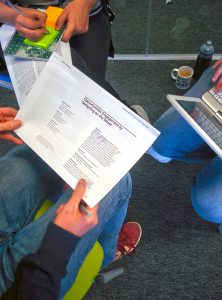
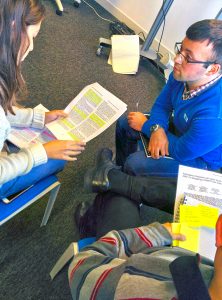
For the next stage of the session, like last week group members were asked to spend some time sharing with each other their different interpretations and readings of the paper they had been set. Having shared within their group their different views on the work, each group was asked to create a “diagram” that represented “participation” as it relates to the set reading. We also asked each group to then map the papers they had found onto this diagram. These were then presented back to everyone at the end.
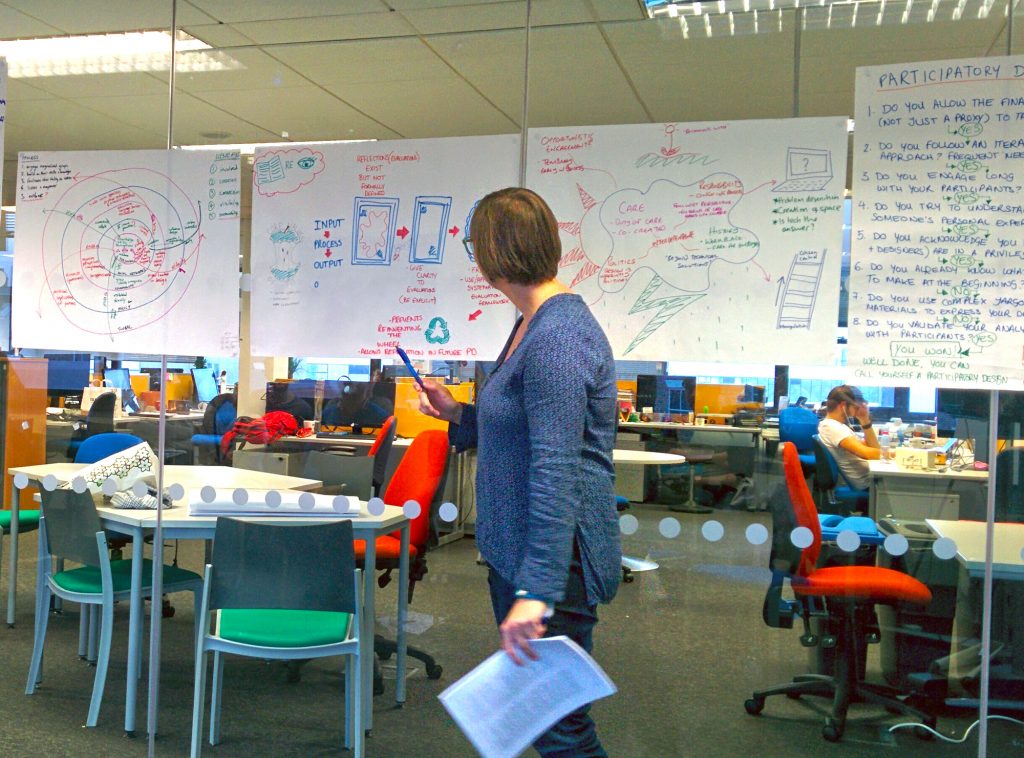
Group 1: Sarah, Alex and Dinislam (Malmo Living Labs)
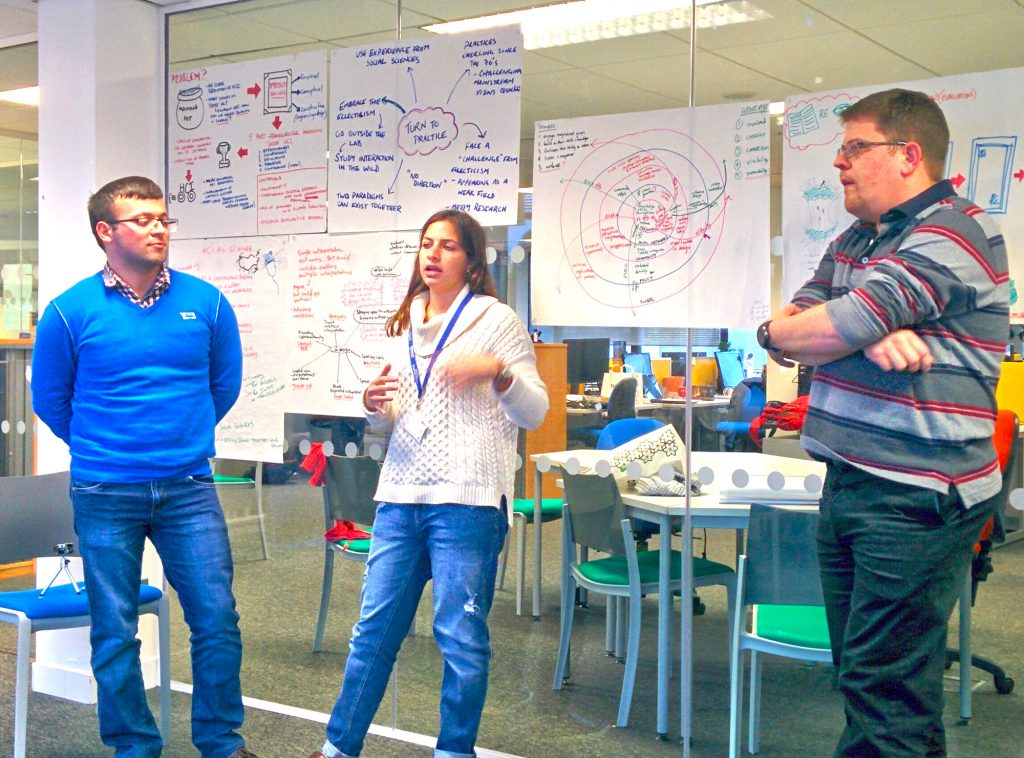
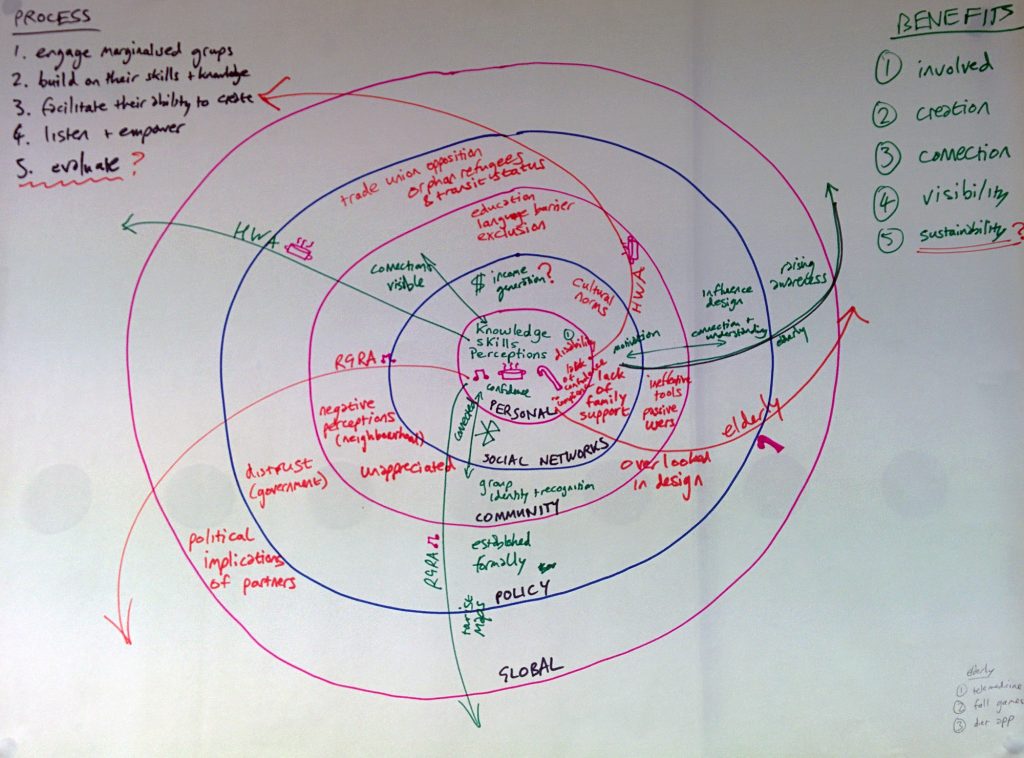
Group 2: Dan, Mo and Lydia (Evaluation in Participatory Design)
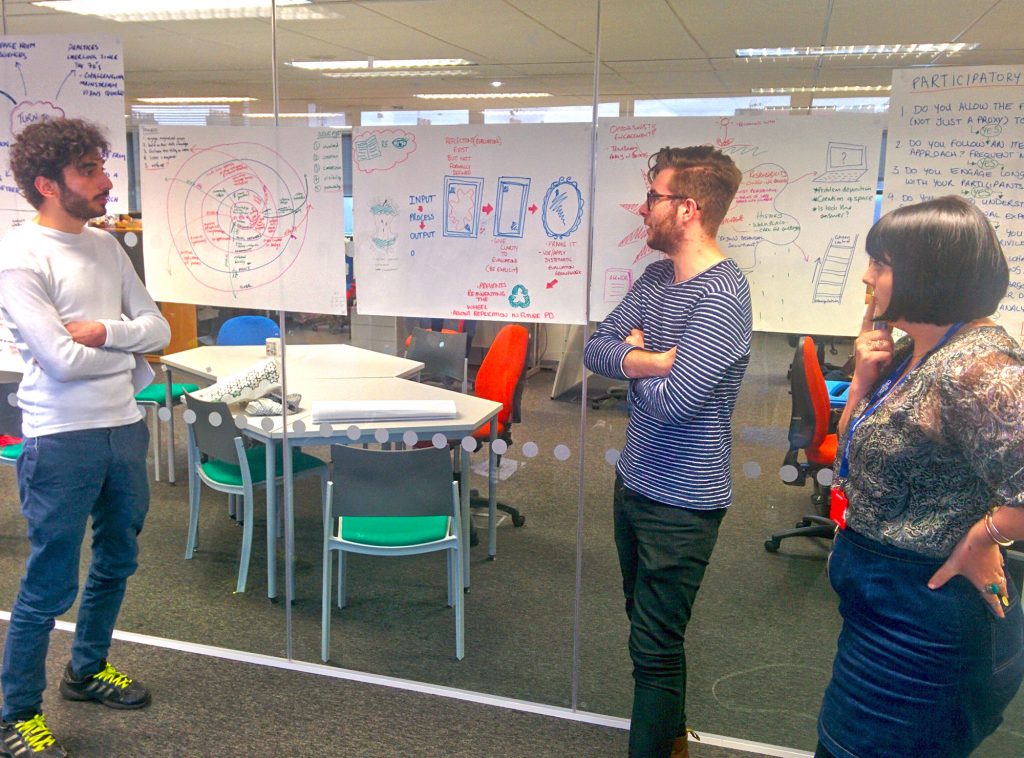
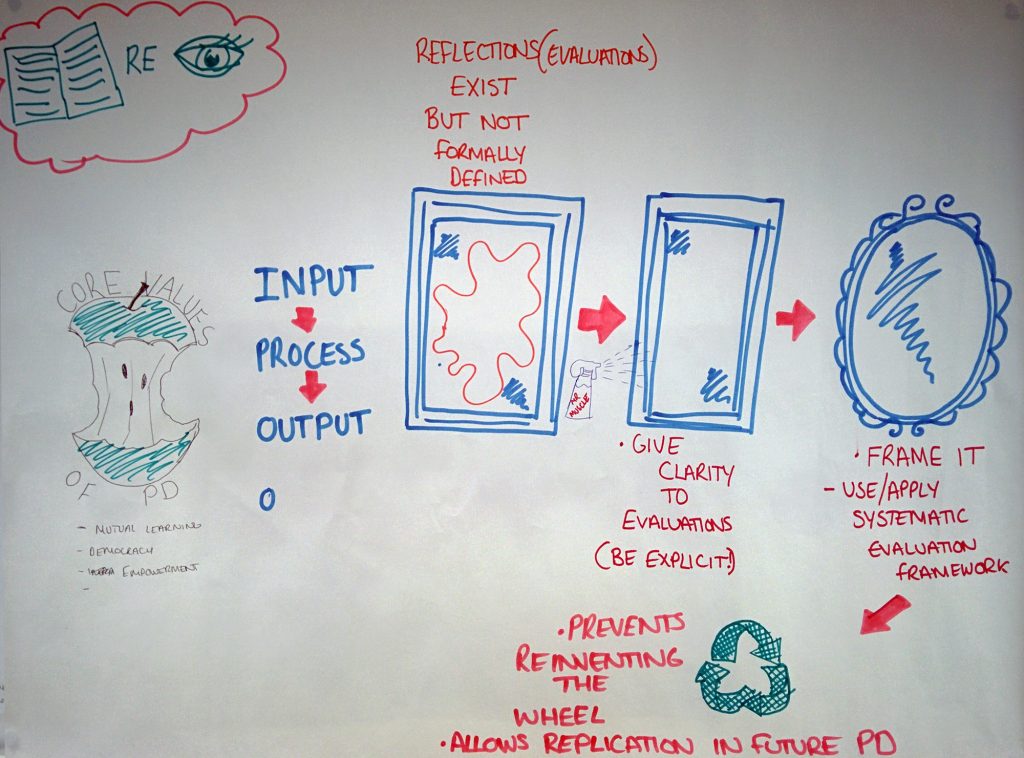
Group 3: Tom, Dalya and Sean (Structuring Social Relations)
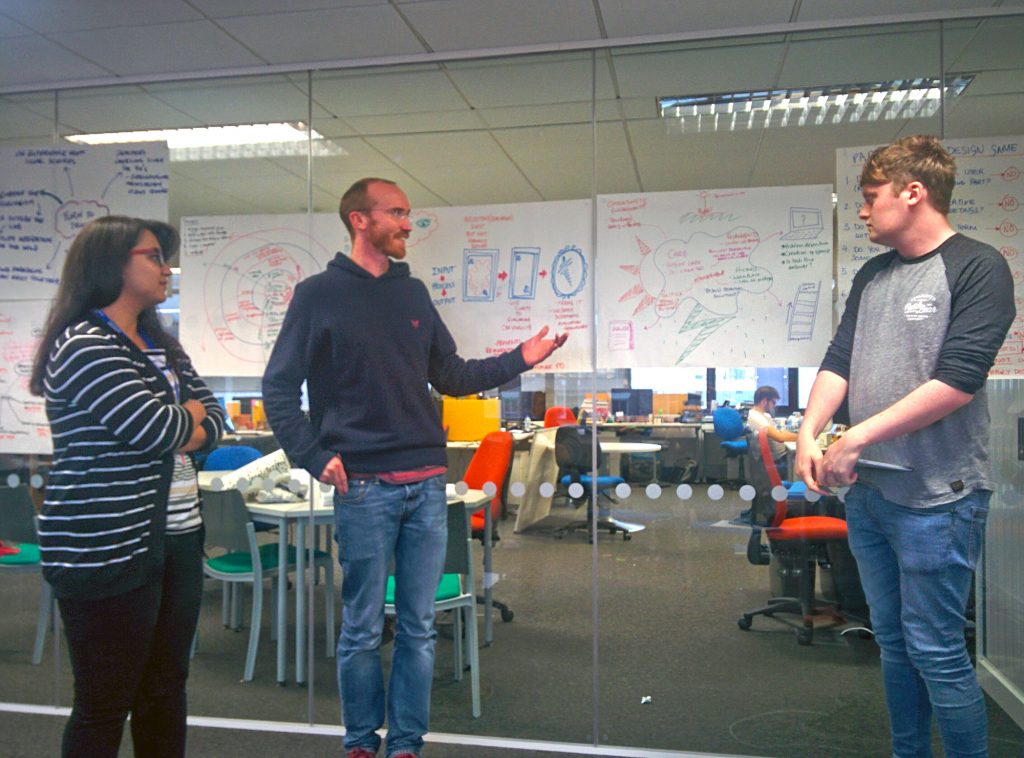
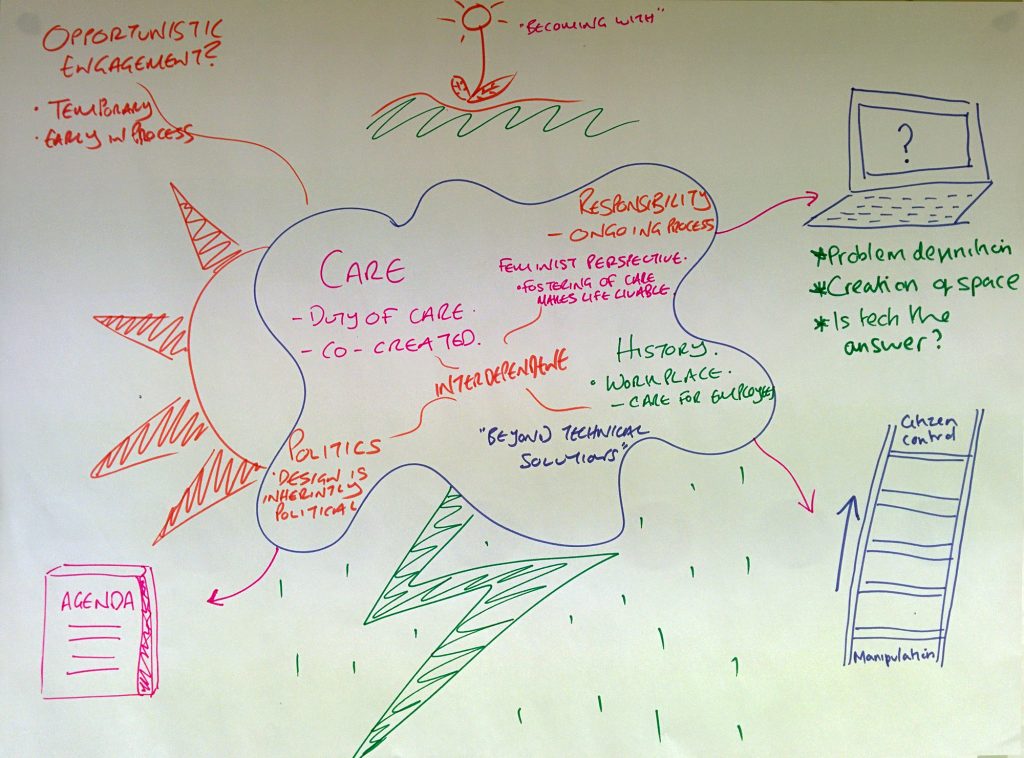
Group 4: Rosie, Sebastian and Shichao (Participatory Design with People with Dementia)
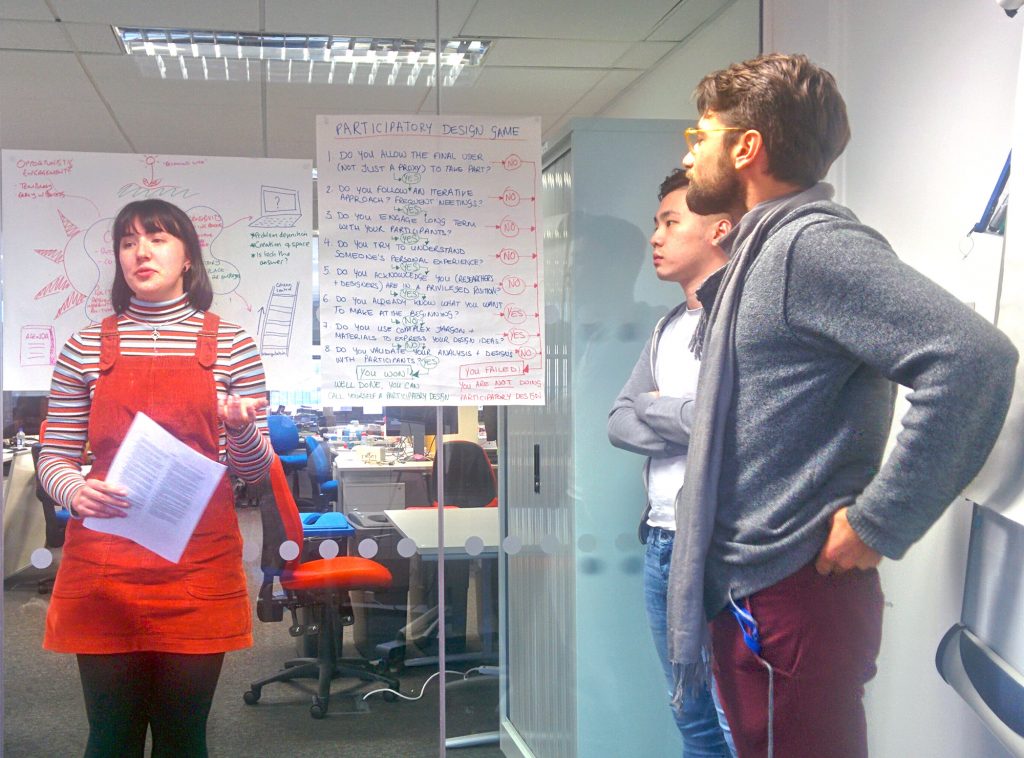
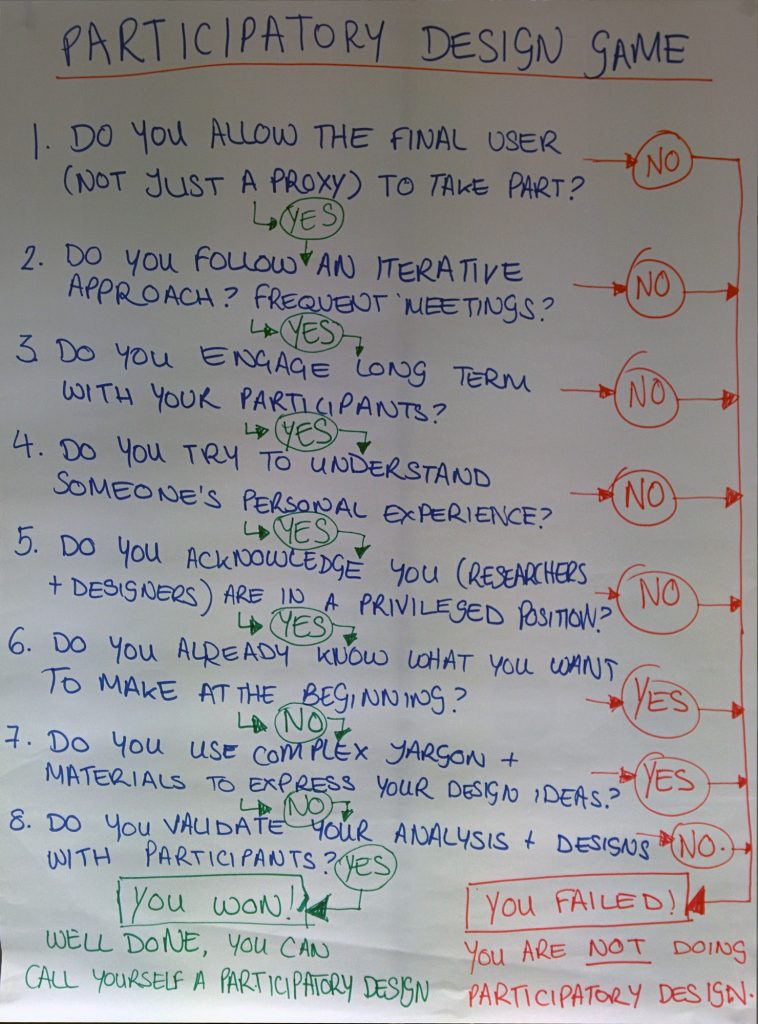
Tasks for Week 4:
You have been given different reading groups for next weeks session, which is on “Pervasive and Invasive” (also known as, Ubicomp).
Group 1: Dalya, Lydia, Sebastian (Ubicomp’s colonial impulse (Dourish and Mainwaring))
Group 2: Shichao, Alex, Sarah (What Next, Ubicomp? (Abowd))
Group 3: Dinislam, Rosie, Tom (Yesterday’s Tomorrows (Bell and Dourish))
Group 4: Dan, Sean, Mo (Moving on from Weiser’s Vision (Rogers))
I would also like you all to have a look at (i.e., quickly read) the “classic” text by Mark Weiser that is one of the most cited articles in HCI ever – The Computer for the 21st Century.
There are the normal tasks for next week’s session:
(1) Individually read your set paper over the coming week, following the tips and tactics briefly discussed in this first session, and as detailed in the ‘Close and Critical Reading’ section of the Resources page.
(2) Write an approximately 500 word blog post that is a critical review of the paper (again, use the materials sent around at the start of the module and on the Resources page as an initial guide to help) and upload this onto the website before we meet next week.
(3) Identify one paper that is an “example” or “case study” of a ubicomp application. Choose a paper that describes a technology you find interesting OR a paper that describes a system that you find troubling and invasive (or both!). To find examples, go to the UbiComp conference proceedings pages on the ACM Digital Library, and skim through the “table of contents” (the right tab):
2016: http://dl.acm.org/citation.cfm?id=2971648&CFID=617024183&CFTOKEN=20084724
2015: http://dl.acm.org/citation.cfm?id=2750858&CFID=617024183&CFTOKEN=20084724
2014: http://dl.acm.org/citation.cfm?id=2632048&CFID=617024183&CFTOKEN=20084724
2013: http://dl.acm.org/citation.cfm?id=2493432&CFID=617024183&CFTOKEN=20084724
2012: http://dl.acm.org/citation.cfm?id=2370216&CFID=617024183&CFTOKEN=20084724
2011: http://dl.acm.org/citation.cfm?id=2030112&CFID=617024183&CFTOKEN=20084724
2010: http://dl.acm.org/citation.cfm?id=1864349&CFID=617024183&CFTOKEN=20084724
2009: http://dl.acm.org/citation.cfm?id=1620545&CFID=617024183&CFTOKEN=20084724
2008: http://dl.acm.org/citation.cfm?id=1409635&CFID=617024183&CFTOKEN=20084724
2007: http://dl.acm.org/citation.cfm?id=1771592&CFID=617024183&CFTOKEN=20084724
(4) finally, meet in your learning triangle and Gabber about this week’s session! As before, meet in your triangle and “Gabber” around three topics (you can choose these when you open the app). Again, don’t spend too long on this – just grab a tea or coffee, and chat for 20 minutes or so.